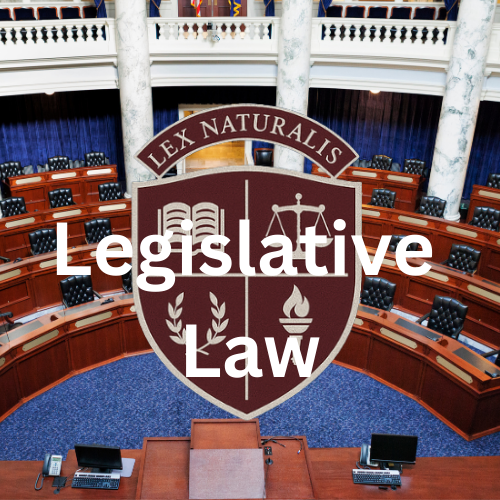The Anatomy of a Statute: Text, Structure, and Meaning
- Dr. Byron Gillory
- Sep 7
- 4 min read

I. The Nature of the Statute
A statute is no ordinary composition of words; it is the very voice of the sovereign power reduced to writing, clothed with authority, and binding upon all who live within the commonwealth. Yet, unlike a sermon or a speech, its dignity lieth not in eloquence, but in precision. For the statute must endure not for a moment’s persuasion, but for generations of obedience. It must be read alike by the magistrate, the jurist, and the common man, and yield to each the same rule of conduct.
Thus a statute is a creature both of language and of law, of structure and of meaning. Its anatomy is not accidental; it is ordered, deliberate, and, if rightly fashioned, a monument of reason.
II. The Text: Words as Instruments of Command
The first element of any statute is its text—the words chosen by the drafter to command, permit, or forbid. Words are here no ornaments; they are the instruments of civil obligation. A single syllable may enlarge liberty or restrain it; an ill-chosen phrase may open the floodgates of litigation.
Blackstone himself declared that “words are generally to be understood in their usual and most known signification.” Yet in statutory text, more is required: clarity, consistency, and technical precision. The drafter must avoid both ambiguity and prolixity; he must employ terms defined by custom or by law itself, so that none may plead ignorance or confusion.
Thus the anatomy of the statute begins with language, but language elevated to the dignity of command.
III. The Structure: Order as the Guardian of Meaning
A statute is not a mere heap of clauses; it is an edifice, whose parts are arranged with care. Structure giveth sense to text, and without it, meaning is lost.
The anatomy of structure may be discerned in several layers:
The Enacting Clause — the solemn declaration of authority, whereby the legislature speaks in its sovereign capacity.
Definitions — the glossary within the statute, ensuring that terms of art bear one meaning only.
Substantive Provisions — the heart of the statute, declaring duties, rights, prohibitions, or permissions.
Procedural Provisions — the rules of enforcement, remedies, or administrative application.
Severability and Savings — the guardrails that preserve the statute should part of it be struck down.
Effective Date and Citation — the temporal boundary by which the statute enters into force and is known to posterity.
Each of these elements is indispensable; together they form the body of the statute. Disorder in structure breedeth disorder in meaning.
IV. The Meaning: Law Embodied in Text and Form
The final element is meaning, which unites text and structure into law. For a statute is not merely words, nor merely arrangement, but words and arrangement ordered toward a purpose. That purpose must be consonant with the constitution, with natural right, and with the enduring good of the people.
Meaning is thus threefold:
Linguistic Meaning — what the words declare in their ordinary or defined sense.
Systemic Meaning — how the statute coheres with the larger body of law, neither contradicting nor undermining it.
Constitutional Meaning — whether the statute remains faithful to the higher law that gives legitimacy to all human enactments.
Without these dimensions of meaning, a statute is but ink; with them, it is law.
V. The Consequences of Neglect
Where drafters neglect the anatomy of statutes, confusion ensues. Vague text breeds litigation; faulty structure opens contradictions; defective meaning invites judicial usurpation. The people, bound by commands they cannot understand, lose confidence in law itself, and liberty is imperiled.
History abounds with examples: statutes passed in haste after calamity, so broad in language that they confer unbounded discretion; codes compiled without coherence, leaving gaps for judges or bureaucrats to fill. Such statutes are the malady of modern governance.
VI. Legislative Law and the Craft of Statutory Anatomy
Herein is the nobility of Legislative Law. It is not content with statutes as political trophies, nor with text as mere ornament. It is the discipline that dissects, designs, and perfects the anatomy of law. The Legislative Counselor asketh not only, what shall we enact?, but also, how shall we frame it so that it endure, cohere, and command?
Thus Gillory & Associates hath pioneered the practice of Legislative Law: to restore statutes to their true dignity as instruments of order. The Blackwell Institute for Legal Studies trains jurists not only to argue statutes in court, but to compose them at their birth, with text precise, structure sound, and meaning consonant with reason and liberty.
VII. Conclusion: The Statute as a Living Architecture
The statute is the skeleton of civil order. Its text is the bone, its structure the frame, its meaning the life which animates the whole. When well composed, it is strong, durable, and just; when malformed, it yieldeth confusion, weakness, and tyranny.
Therefore let us not despise the anatomy of statutes as a matter of mere technicality. It is in truth the heart of governance itself. For if advocacy be the art of contesting statutes, and judgment the art of construing them, then legislative law is the art of creating them aright—ensuring that the product of enactment be not confusion but clarity, not tyranny but liberty, not mere will but enduring justice.
Comments